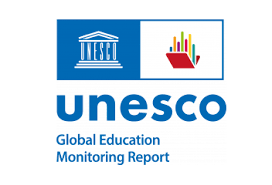Global Education Monitoring Report 2024

- 09 Nov 2024
In News:
- Released at the Global Education Meeting, hosted in Fortaleza by Brazil, the G20 President.
- Highlights progress and challenges in global education, with a focus on leadership, financing, and access.
Key Observations:
Leaders as Agents of Change:
- Education leadership is defined as social influence towards achieving common educational goals.
- Education leaders must:
- Define clear purposes and influence change.
- Balance learning outcomes with equity, quality, and inclusion.
Funding Deficits:
- 4 out of 10 countries spend less than 4% of their GDP on education.
Out-of-School Children:
- 251 million children and youth globally remain out of school, with only a 1% reduction since 2015.
Regional Disparities in Education Access:
- Central and Southern Asia show significant progress, but countries like Afghanistan, Bangladesh, India, and Pakistan still have large out-of-school populations.
Recommendations:
- Leadership Development: Empower school principals with the autonomy to manage schools effectively.
- Capacity Building for System Leaders: Strengthen the ability of education officials to act as system leaders.
- Climate Change Education: Introduce climate change topics in early education across subjects, not limited to science.
India’s Educational Initiatives:
- National Education Policy (NEP) 2020: Focuses on developing school leadership through training and workshops for principals.
- NISHTHA Program: Aims to improve leadership and management competencies of school heads and teachers.
Current Educational Landscape:
- Since 2015, 110 million children have entered school, and 40 million more complete secondary education.
- However, 33% of children in low-income countries remain out of school, compared to only 3% in high-income countries.
- Sub-Saharan Africa houses more than half of the global out-of-school youth.
Challenges in Education Financing:
- UNESCO–World Bank report highlights that 40% of countries allocate less than 15% of their public expenditure to education.
- Countries investing less than 4% of GDP in education face significant resource shortages.
- Low-income countries spend an average of $55 per learner, while high-income countries spend $8,543 per learner.
Need for Innovative Financing Mechanisms:
- Debt-for-Education Swaps: Proposes converting unsustainable debt into funding for education, leveraging past successful initiatives.
- Multilateral Platforms: Suggested to facilitate global negotiations for converting debt into educational investments, involving entities like UNESCO and the G20.
International Cooperation and Solidarity:
- Decline in Education Assistance: Official development assistance for education has decreased from 9.3% in 2019 to 7.6% in 2022.
- Strengthening Partnerships: The need for enhanced global cooperation to fill the educational financing gap and ensure equitable access to quality education.
